Assuntos relacionados
[Notebook] Como corrigir os problemas de atualização do Windows - Solução de problemas
Produtos aplicáveis: Notebook, desktop, PC tudo-em-um, dispositivo portátil para jogos, placa-mãe, MiniPC
Se você tiver problemas ao instalar as atualizações do Windows, consulte a etapa de solução de problemas abaixo.
To provide you more detailed instruction, you can also click ASUS YouTube video link below to know more about Get Support for Windows Update Installation.
https://www.youtube.com/watch?v=gfJ29eIKJwE
Vá para a instrução correspondente com base no sistema operacional Windows atual em seu computador:
Sistema operacional Windows 11
índice
- Atualize e confirme o BIOS / drivers com a versão mais recente em seu PC
- Uso da ferramenta de solução de problemas no Windows
- Instale manualmente o pacote autônomo de atualização do Windows
- Use a ferramenta System File Checker para reparar arquivos de sistema ausentes ou corrompidos
- Restaurar o sistema a partir do ponto de restauração
- Reiniciar o sistema
Como atualizar a versão de BIOS pelo sistema operacional
Como atualizar a versão de BIOS utilizando o EZ Flash
(Para produtos Deskotp, consulte ASUS Motherboard EZ Flash 3 Introdução)
Para executar a atualização de drivers, aqui você pode aprender mais sobre:
Como atualizar os drivers via suporte ao cliente pelo MyASUS
Se o problema persistir depois de atualizar o BIOS e os drivers até a data, continue no próximo capítulo para solução de problemas.
Uso da ferramenta de solução de problemas no Windows
- Digite e pesquise [Configurações de solução de problemas] na barra de pesquisa do Windows①, depois clique em [Abrir]②.
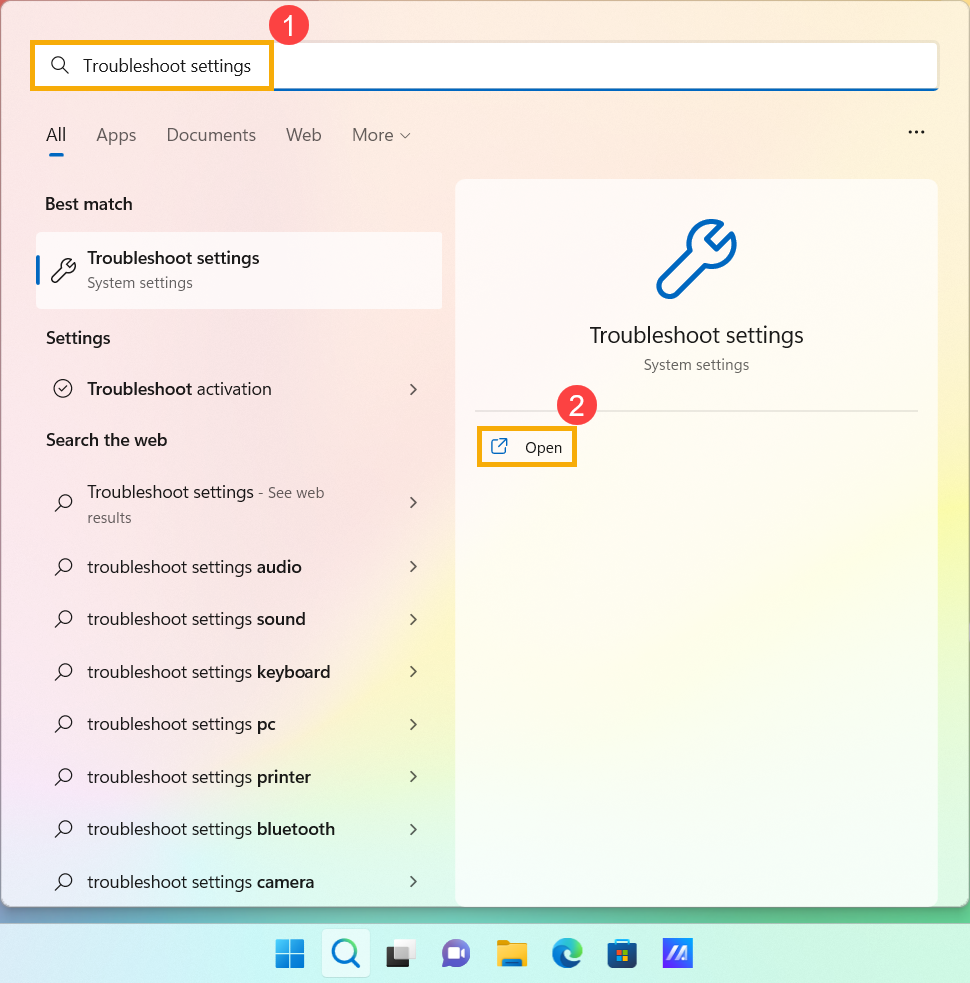
- Selecione [Outros solucionadores de problemas]③.
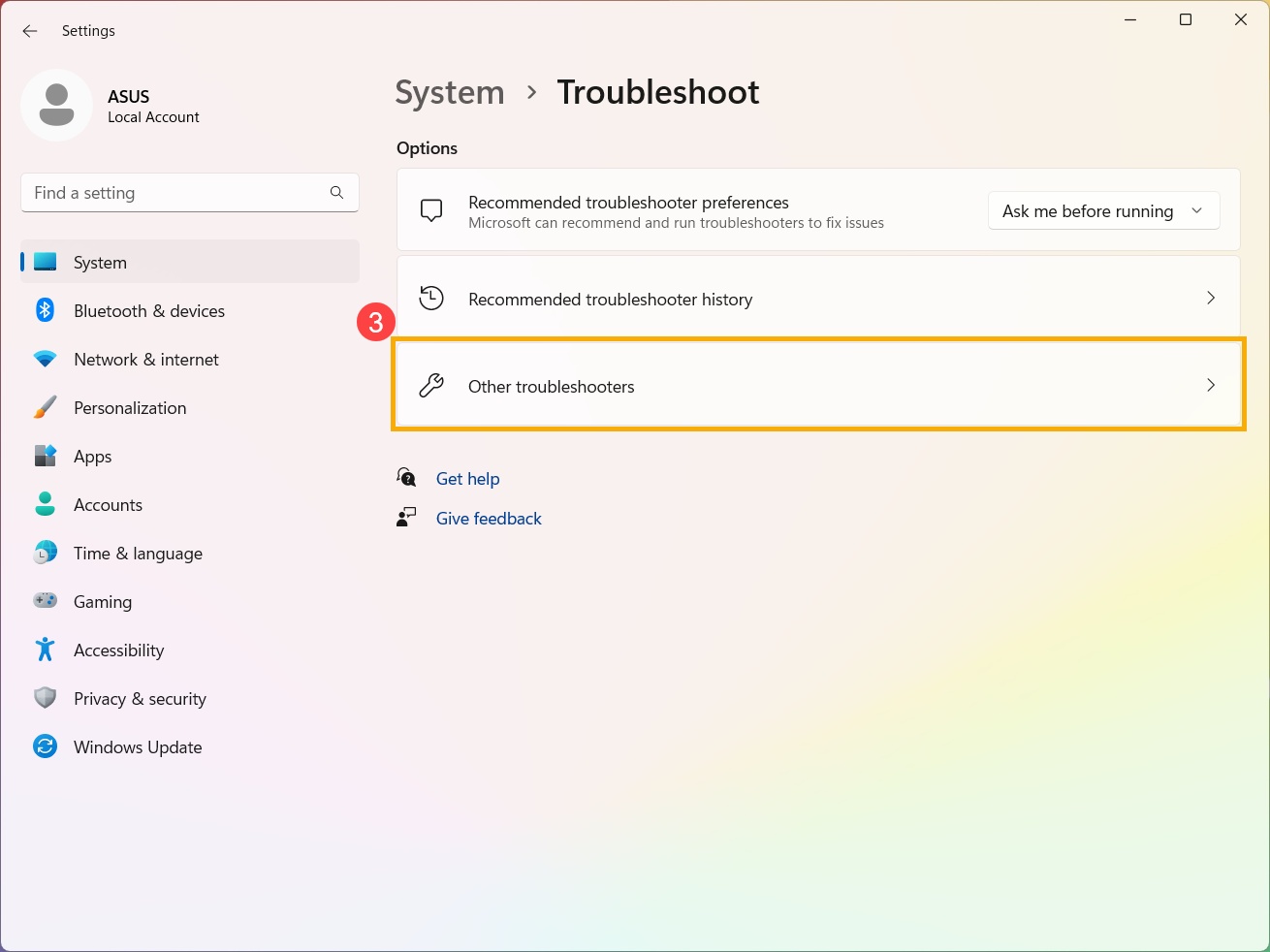
- Clique em [Executar] no Opção Windows Update④, depois siga as instruções na tela para concluir o processo de solução de problemas. Se o problema persistir, continue com a próxima solução de problemas;
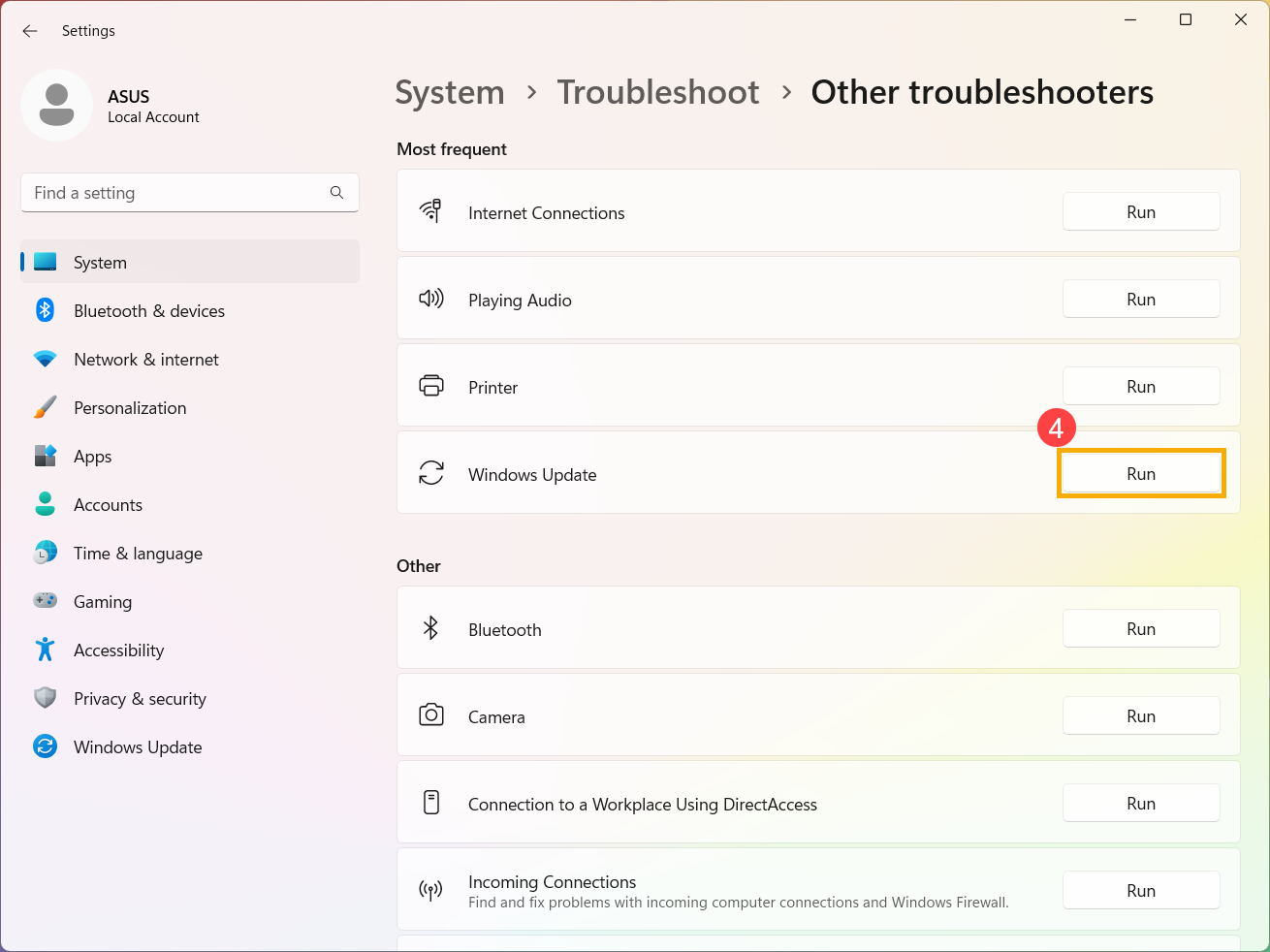
Instale manualmente o pacote autônomo de atualização do Windows
- Registre o nome da versão de atualização. Em geral, a versão de atualização utilizou "KB" como nome, como KB5017271. (A seguir, tomamos o KB5017271 como exemplo).
- Abra o Site do Catálogo do Microsoft Update. Digite o número do KB na barra de pesquisa e clique em Pesquisar①.
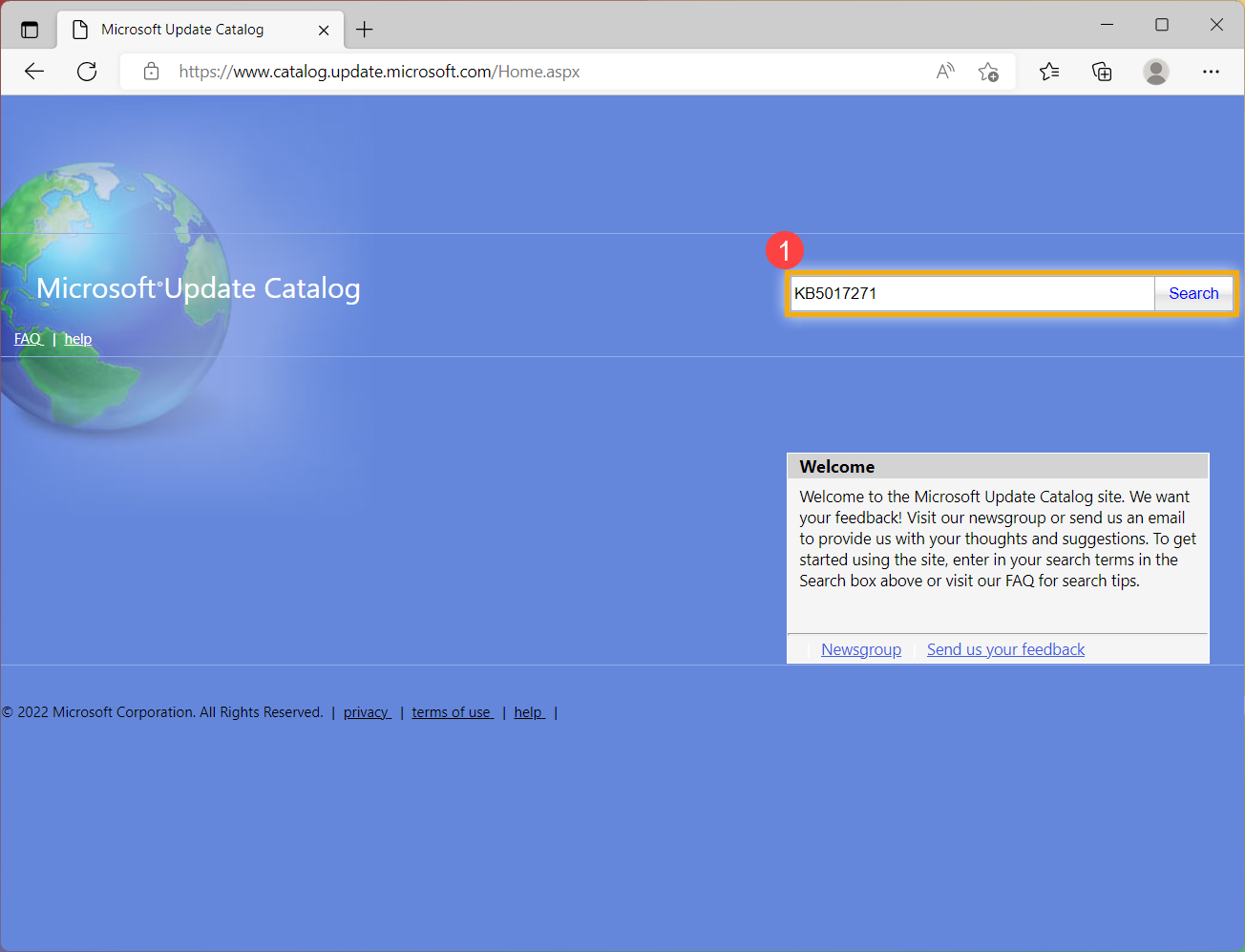
- No resultado da pesquisa, clique em Download correspondente à versão e à arquitetura de seu sistema②.
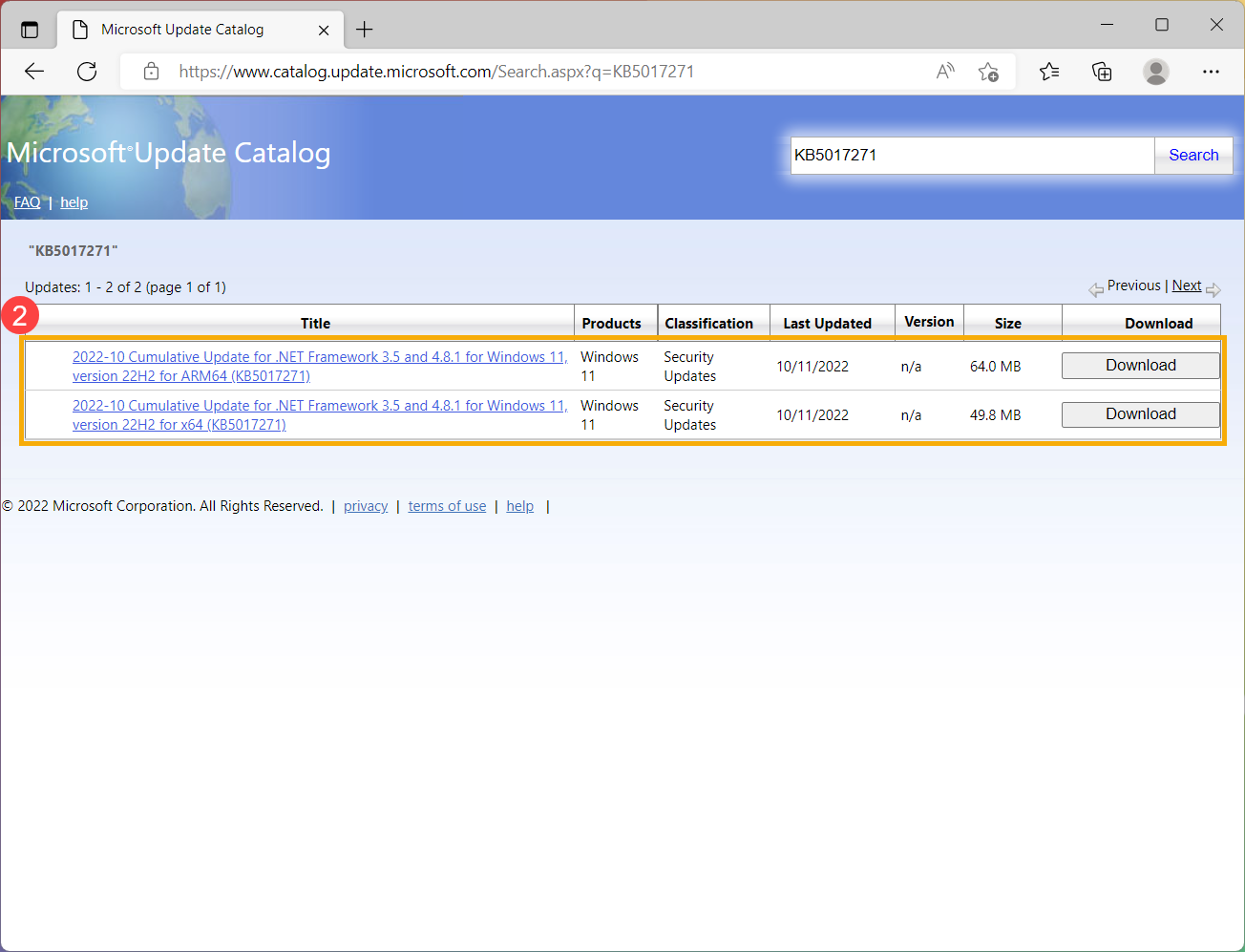
- Clique no link para fazer download do pacote autônomo③.

- Após a conclusão do download, clique duas vezes no pacote autônomo para iniciar o processo de instalação④. Se a instalação falhar, prossiga para a próxima solução de problemas.
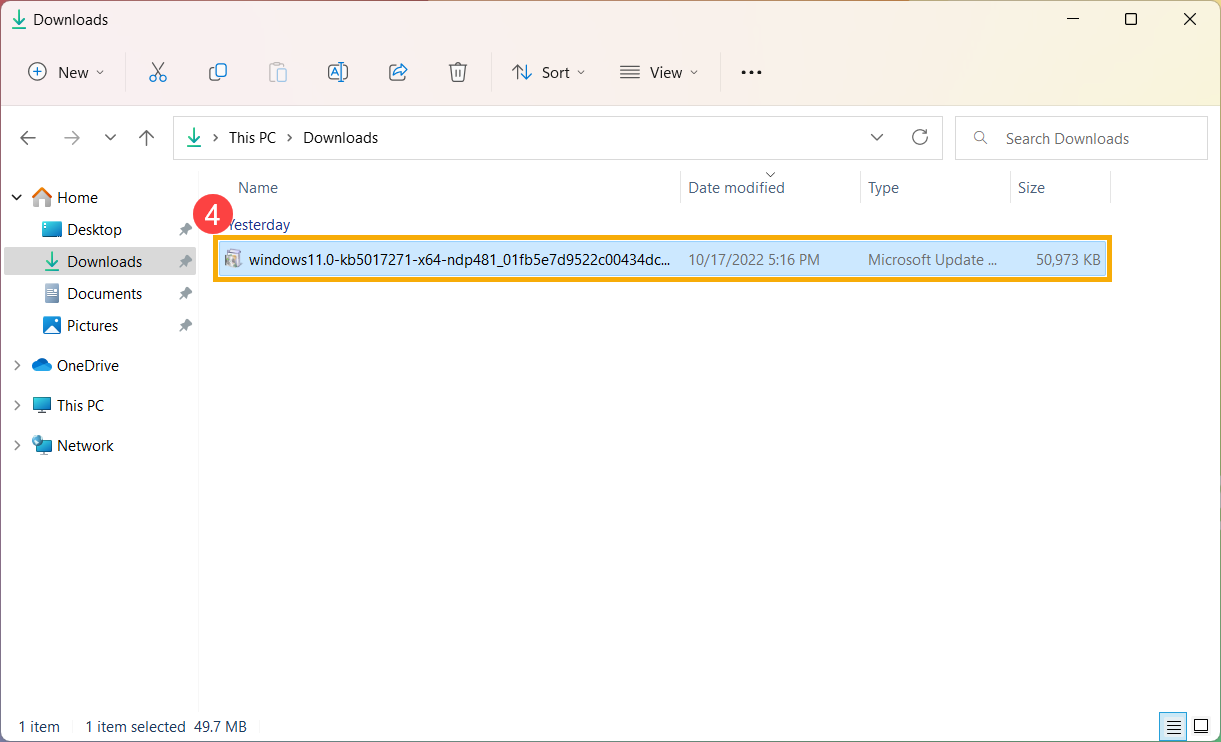
Use a ferramenta System File Checker para reparar arquivos de sistema ausentes ou corrompidos
- Digite e pesquise [Prompt de Comando] na barra de pesquisa do Windows①, depois clique em [Executar como administrador]②.
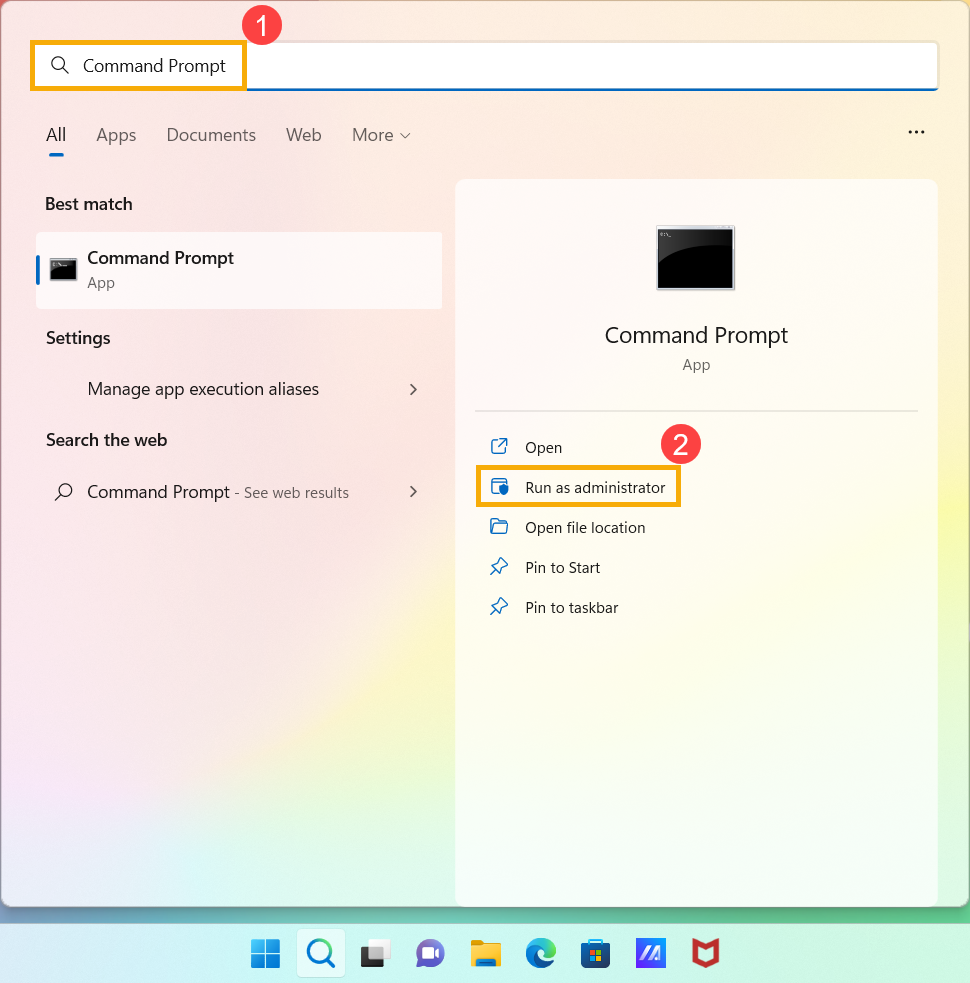
- No prompt de comando, digite [DISM.exe /Online /Cleanup-image /Restorehealth] e pressione o botão Enter no teclado③.
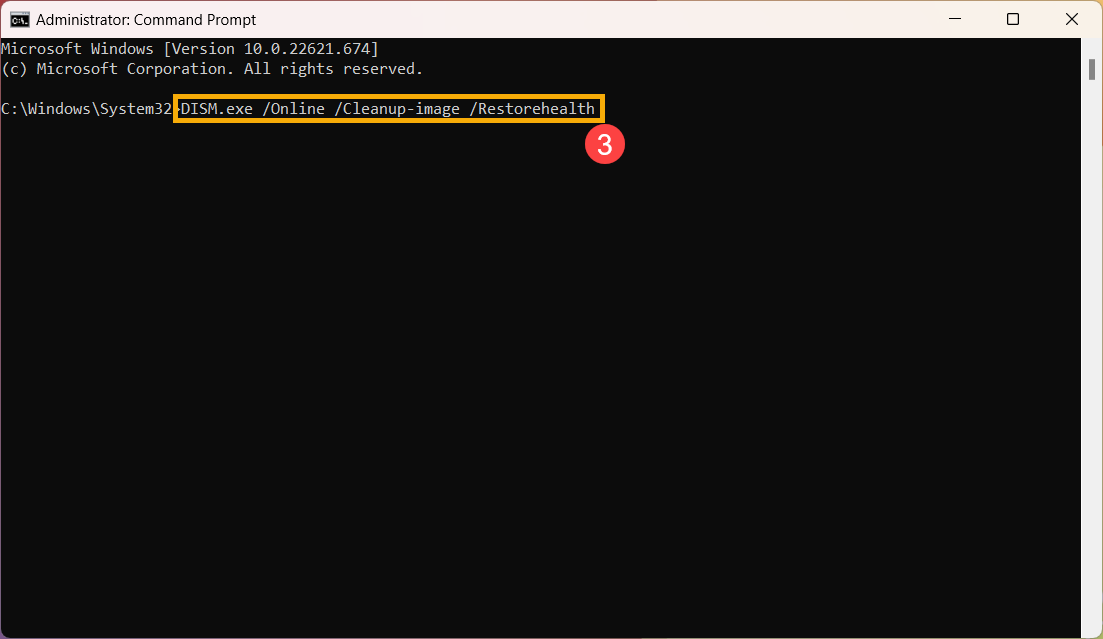
- Quando a operação de comando for executada com êxito e uma mensagem de confirmação "A operação de restauração foi concluída com êxito" estiver presente, digite [sfc /scannow] e pressione Enter no teclado④.
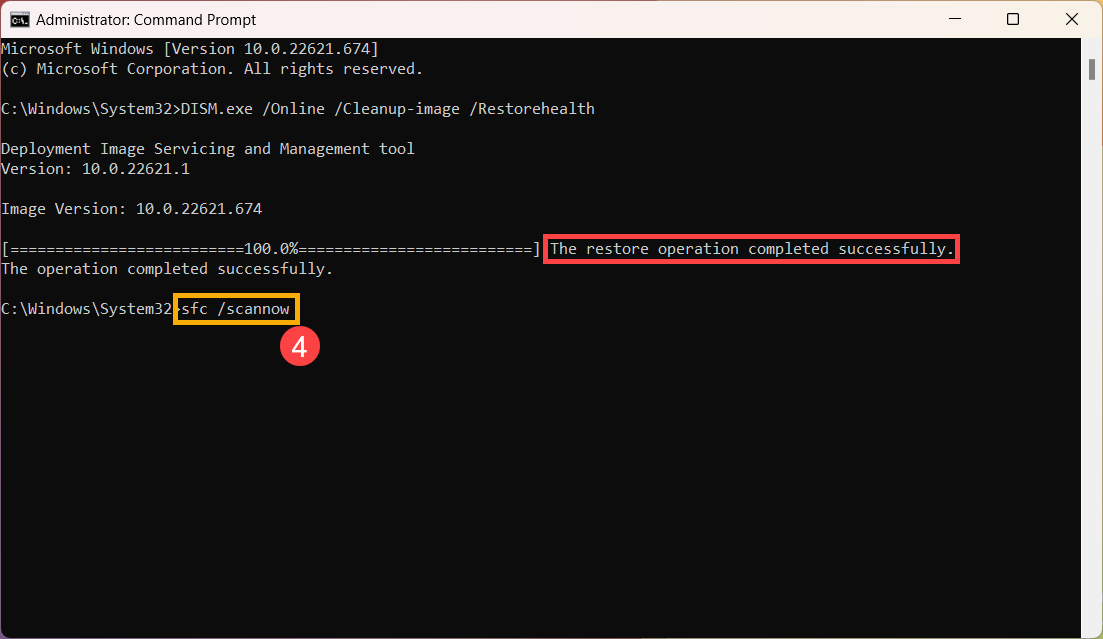
- Aguarde até a verificação do sfc a verificação atinge 100% de conclusão, feche o Prompt de Comando e tente executar o Windows Update novamente. Se o problema persistir, prossiga para a próxima solução de problemas.
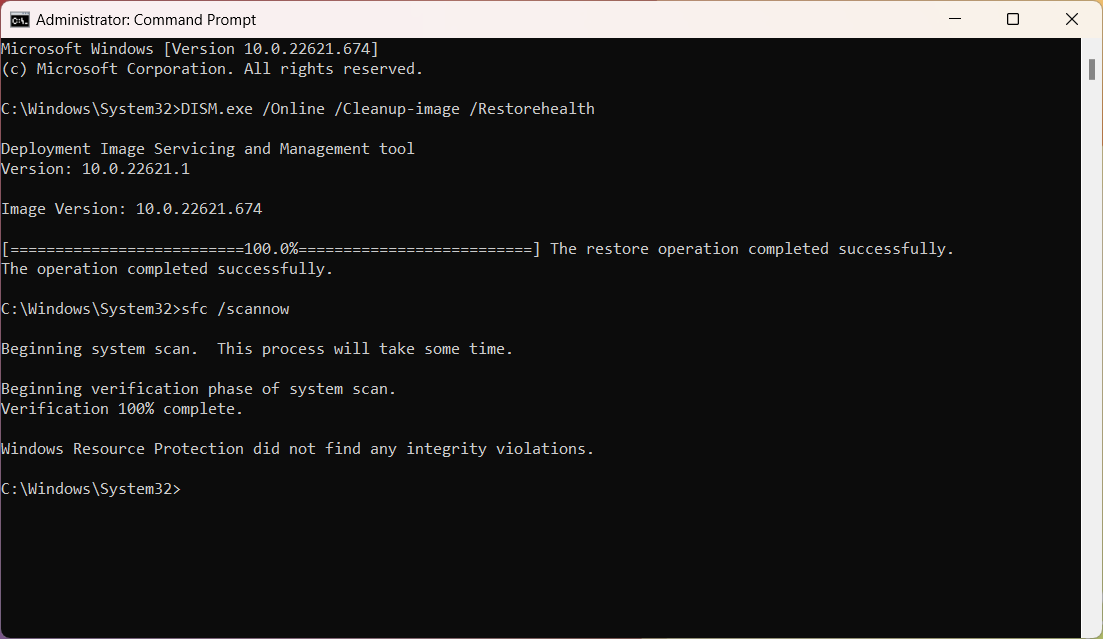
Restaurar o sistema a partir do ponto de restauração
Se o problema do Windows Update ocorrer recentemente e se você já tiver criado um ponto de restauração ou se existir uma restauração automática do sistema, tente restaurar o dispositivo para um ponto anterior ao início do problema para solucioná-lo. Aqui você pode saber mais sobre Como usar o ponto de restauração para restaurar o sistema.
Se o problema persistir, prossiga para a próxima solução de problemas.
Se o problema persistir após a conclusão de todas as etapas de solução de problemas. Faça backup de seus arquivos pessoais e, em seguida, redefina o dispositivo para voltar à configuração original. Aqui você pode saber mais sobre: Como redefinir o sistema.
Se o seu problema não for resolvido com a solução e as informações acima, entre em contato com o centro de atendimento ao cliente da ASUS para obter mais informações.
Sistema operacional Windows 10
- Update and confirm BIOS / drivers with the latest version on your device
- Using Troubleshooting tool in Windows
- Get the latest version of Windows 10 via Windows 10 Update Assistant
- Manually install the standalone Windows update package
- Use the System File Checker tool to repair missing or corrupted system files
- Restore the system from restore point
- Reset the system
Update and confirm BIOS / drivers with the latest version on your device
Updating software usually helps the system stability and optimization, so we recommend you check and often update to the latest version on your device. Here you can learn more about:
How to update the BIOS version in Windows system
How to use EZ Flash to update the BIOS version
(For desktop products, please refer to ASUS Motherboard EZ Flash 3 Introduction.)
For executing drivers update, here you can learn more about:
How to update drivers via System Update in MyASUS
If the problem persists after you have updated BIOS and drivers to the date, please continue to the next chapter for troubleshooting.
Using Troubleshooting tool in Windows
- Click [Start menu]①, then click [Settings]②.
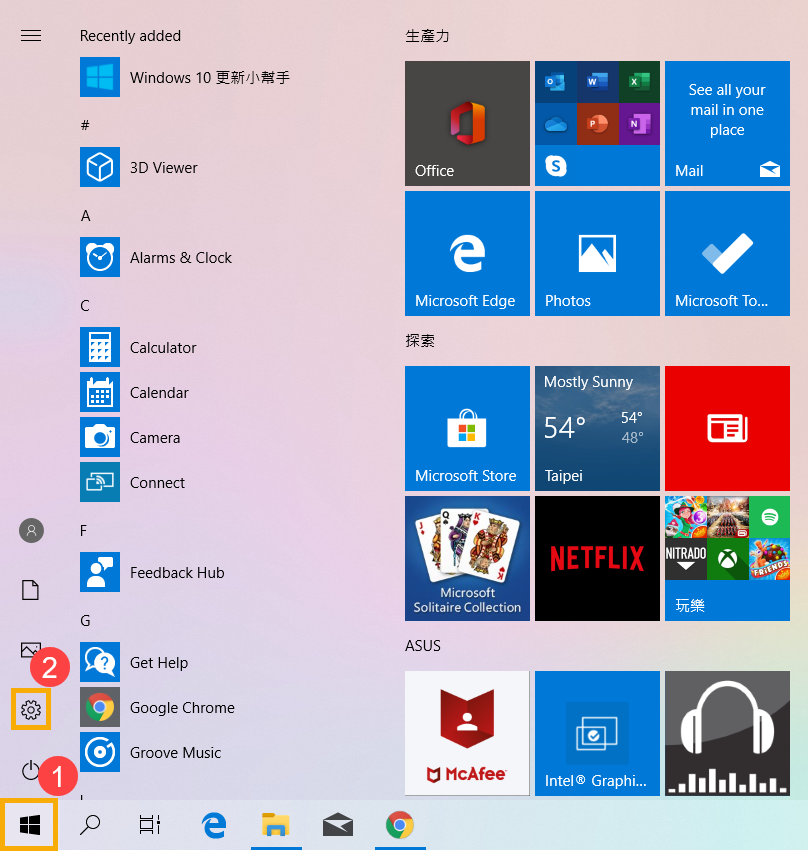
- Select [Update & Security]③.
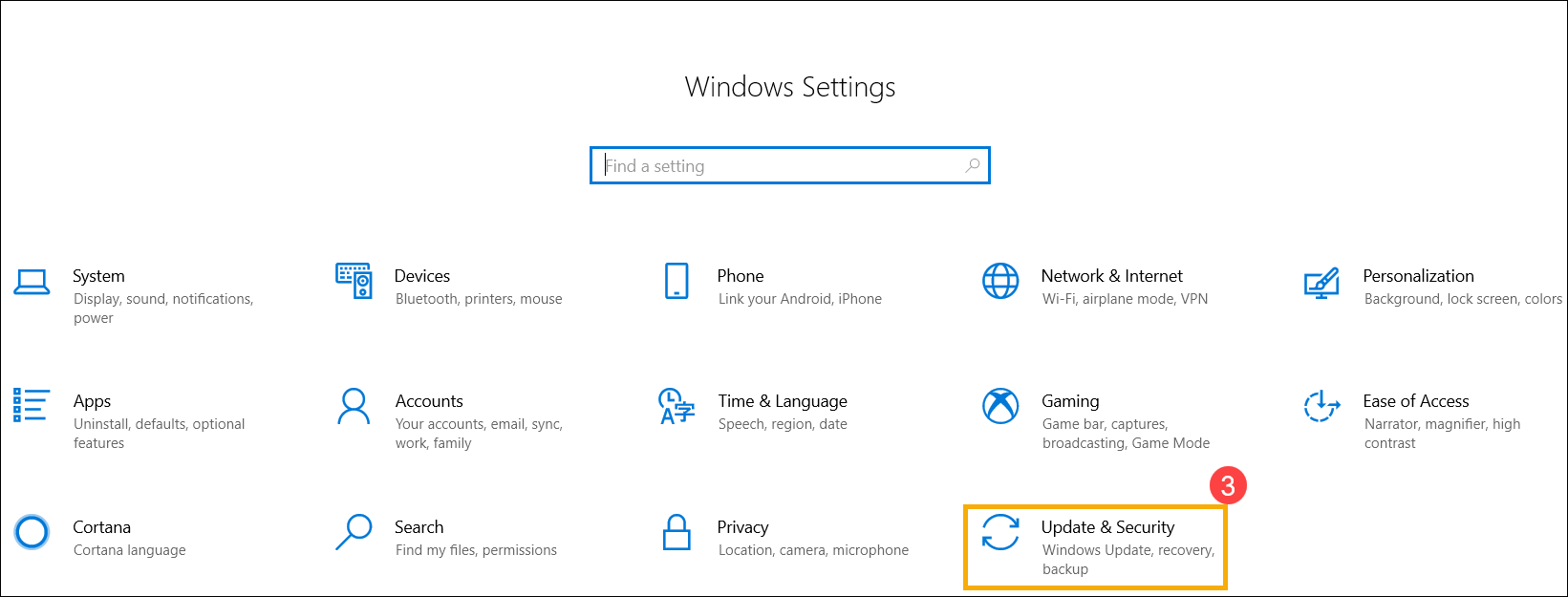
- Select [Troubleshoot]④, click [Windows Update]⑤ and [Run the troubleshooter]⑥, then follow the on-screen instructions to complete the troubleshooting process. If the problem persists, please continue the next troubleshooting.
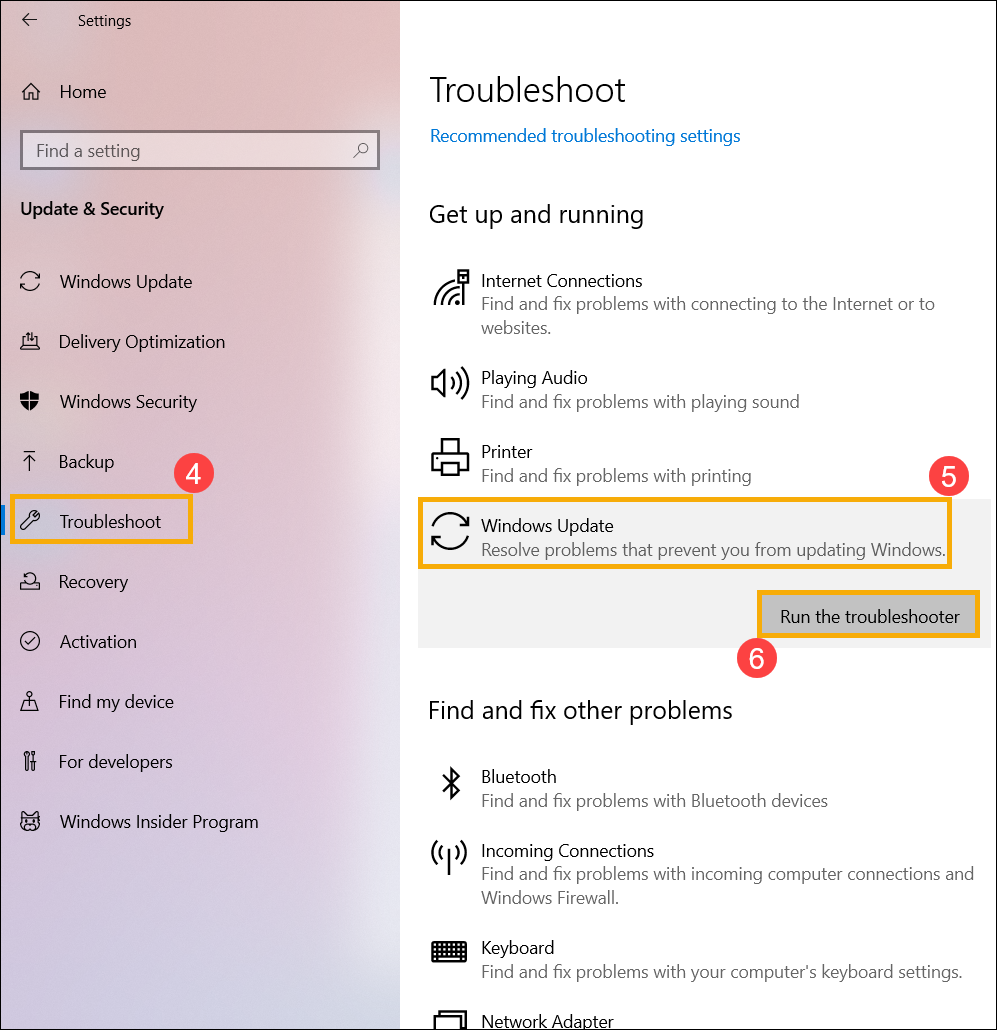
Get the latest version of Windows 10 via Windows 10 Update Assistant
The Update Assistant can help you update to the latest version of Windows 10.
- Go to the Microsoft official website to download the Update Assistant tool. Click [Update now]① to start to download the Windows 10 Update Assistant tool.
Note: The following picture is the current version and just for reference, please download the latest version which Microsoft provides.
- After the download process is completed, double-click your downloaded tool②.
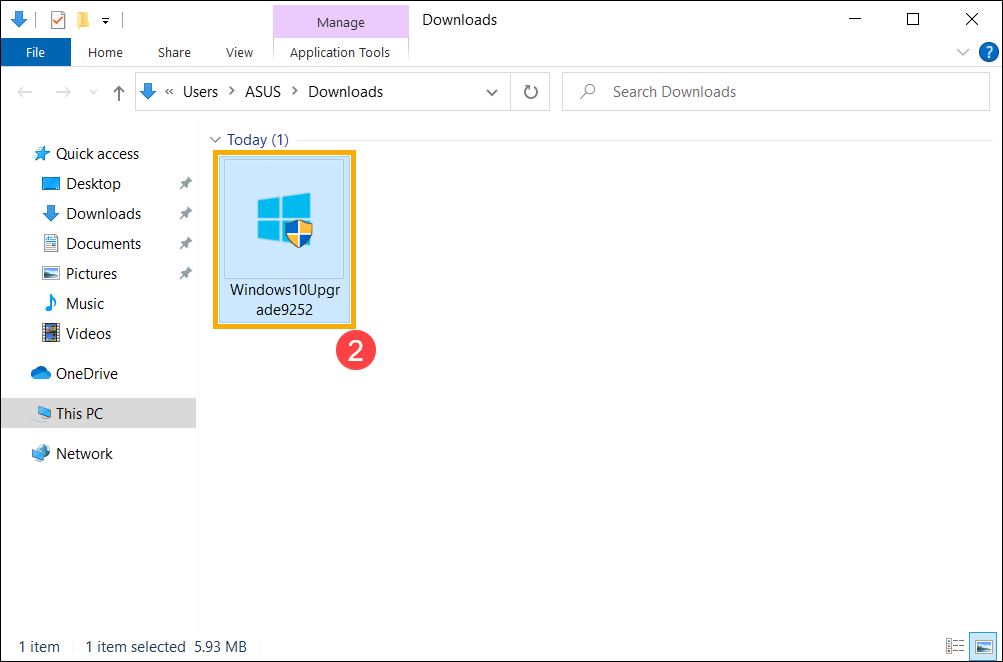
- If the User Account Control notification is appeared, please select [Yes]③.
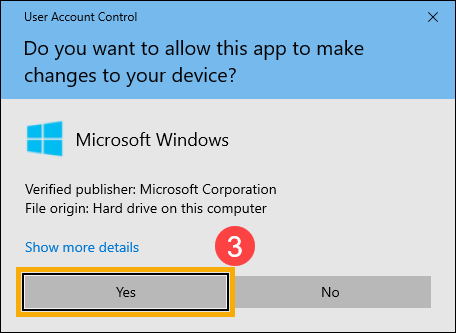
- Windows 10 Update Assistant will show the current version on your device, and what the latest version is. Select [Update Now]④ to start the update process.

- Update Assistant will check whether your device's hardware devices are compatible with the latest version of Windows 10. After confirming your device is compatible, please select [Next]⑤ to start to download the latest version of Windows 10.
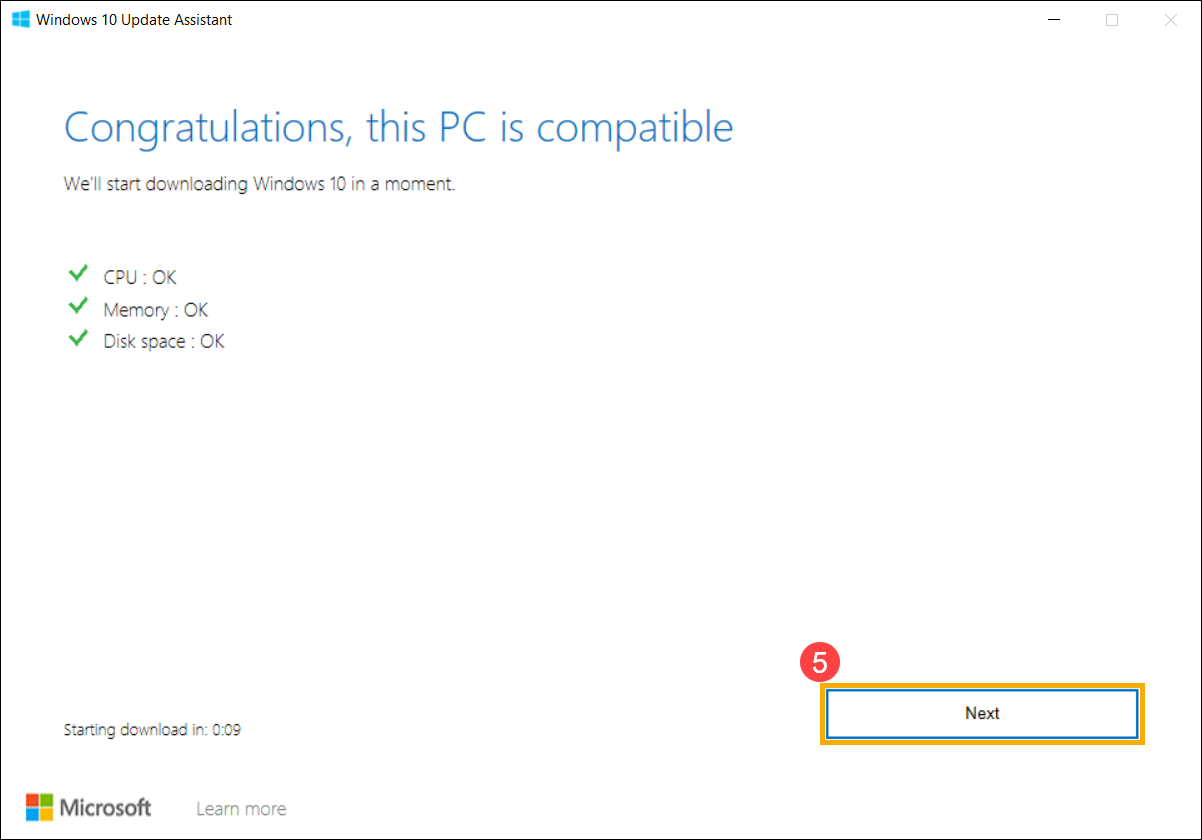
- Update Assistant is downloading the latest version of Windows 10.
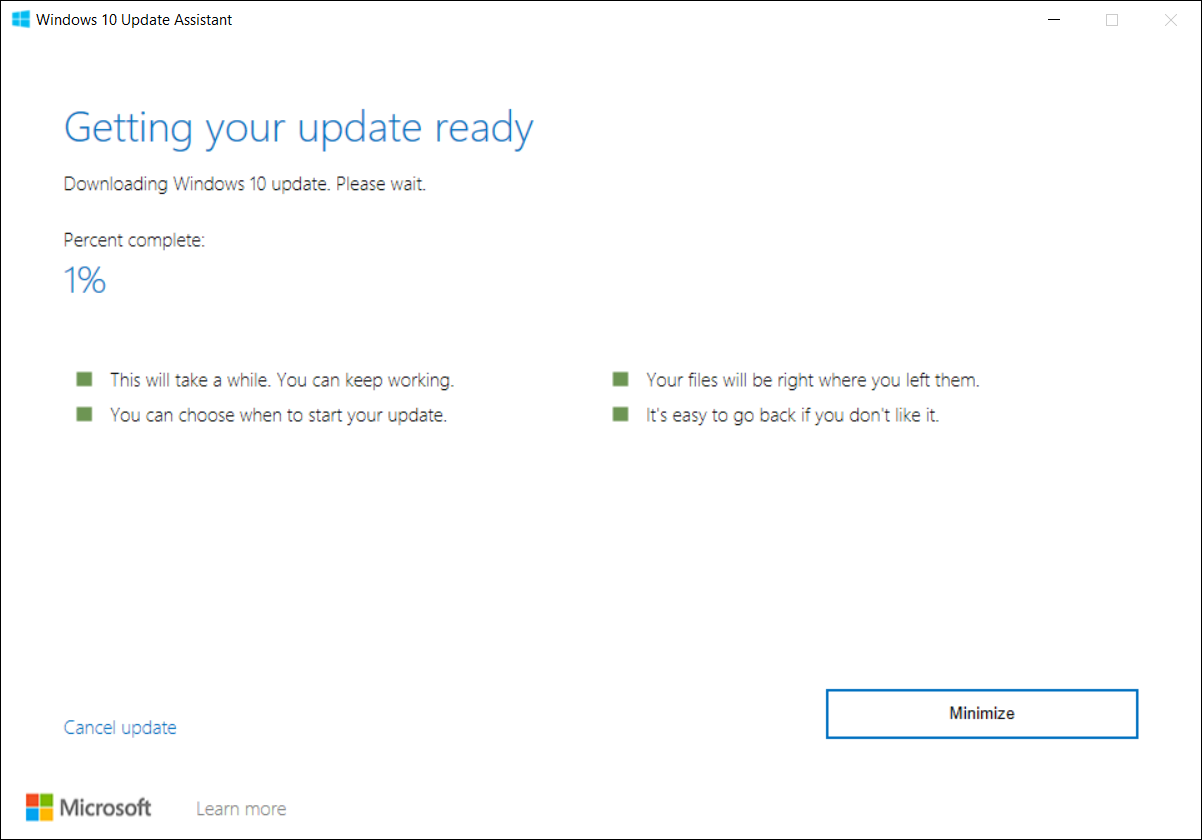
- After the downloading process is completed, please click [Restart now]⑥ to start to install the latest version of Windows 10. If the installation is failure, please continue to the next troubleshooting.
Note: It will take some time to update Windows, so please make sure that the AC adapter is connected during the updating process. Also, please do not force to shut down to prevent any issue.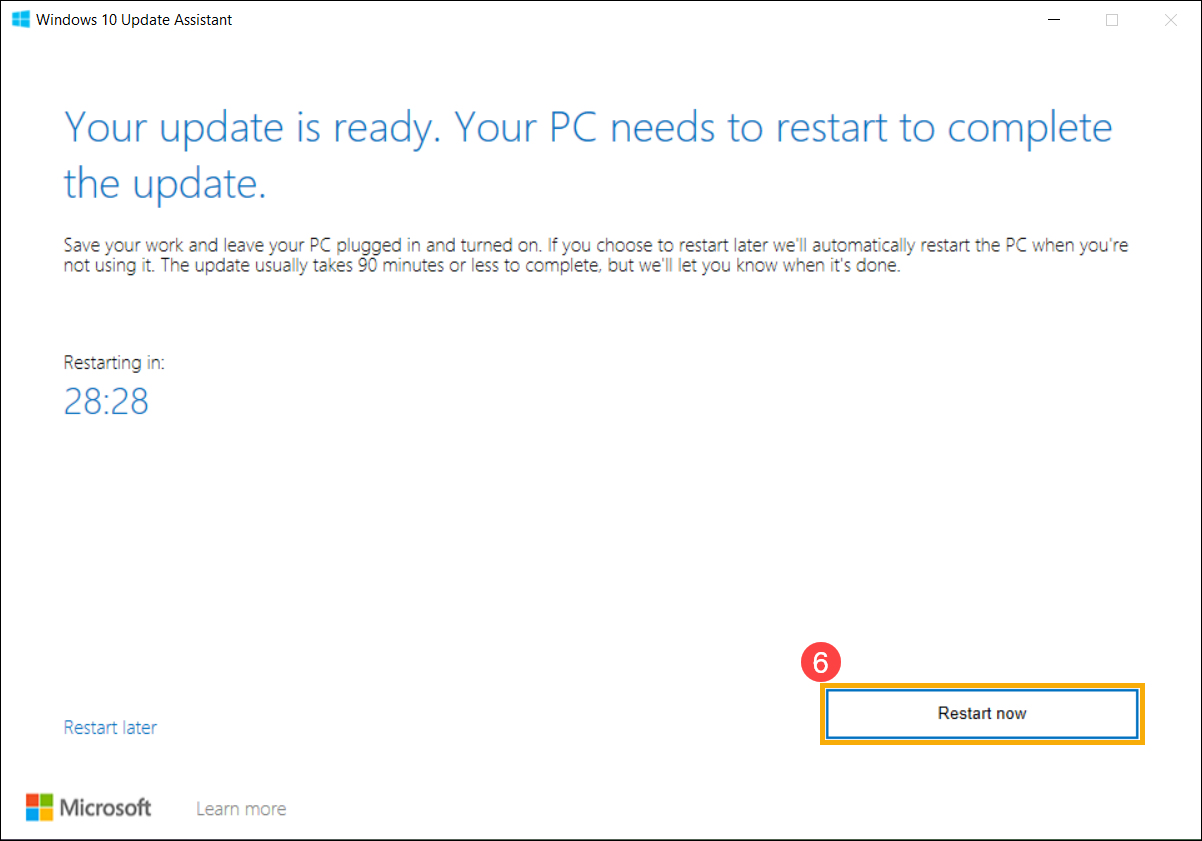
Manually install the standalone Windows update package
- Please record the name of update version. In general, the update version utilized “KB” as a name, such as KB5016688. (The following takes KB5016688 as an example.)
- Open the Microsoft Update Catalog website. Type the KB number in the search bar and then click Search①.
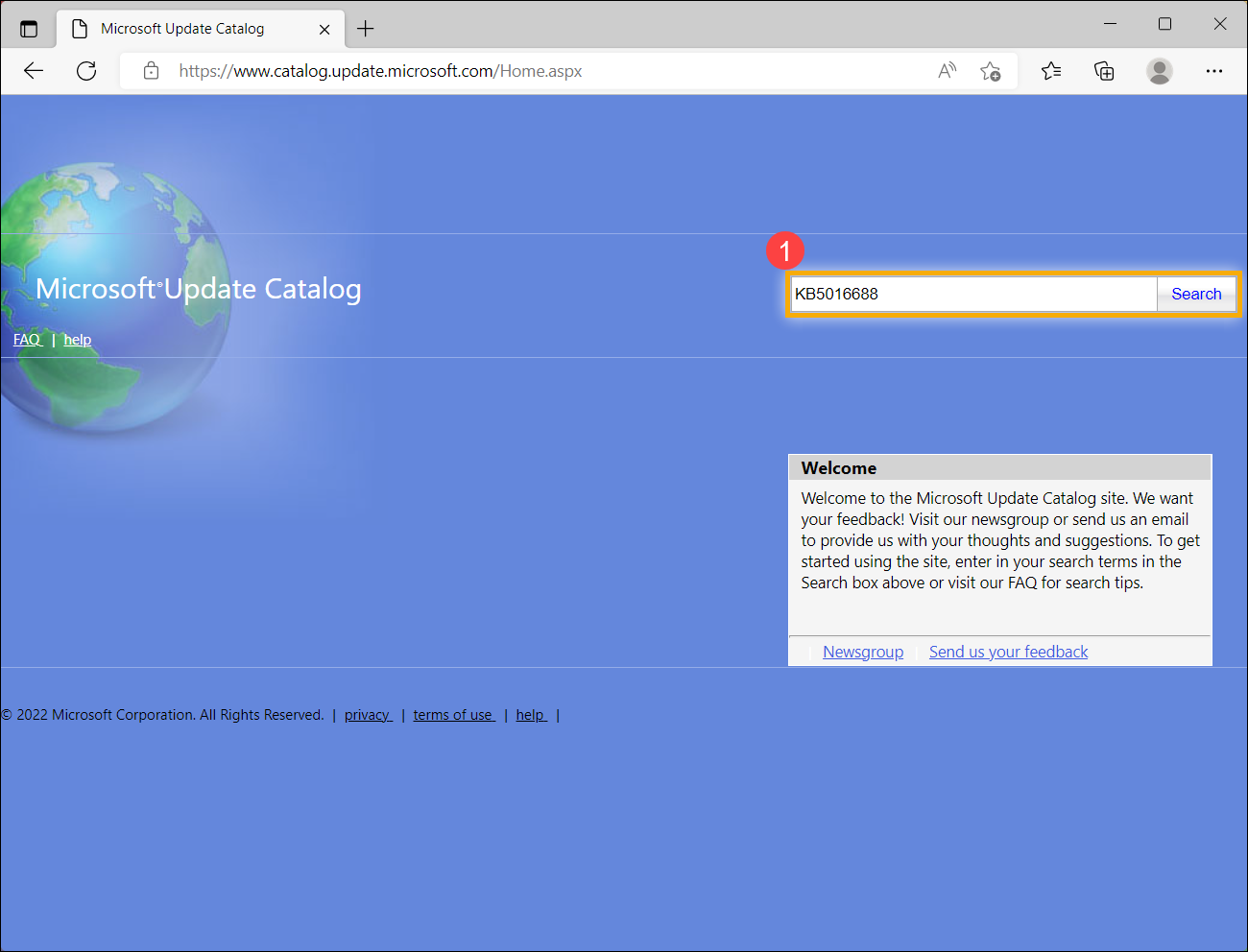
- Under the search result, click Download corresponding to your system version and architecture②.
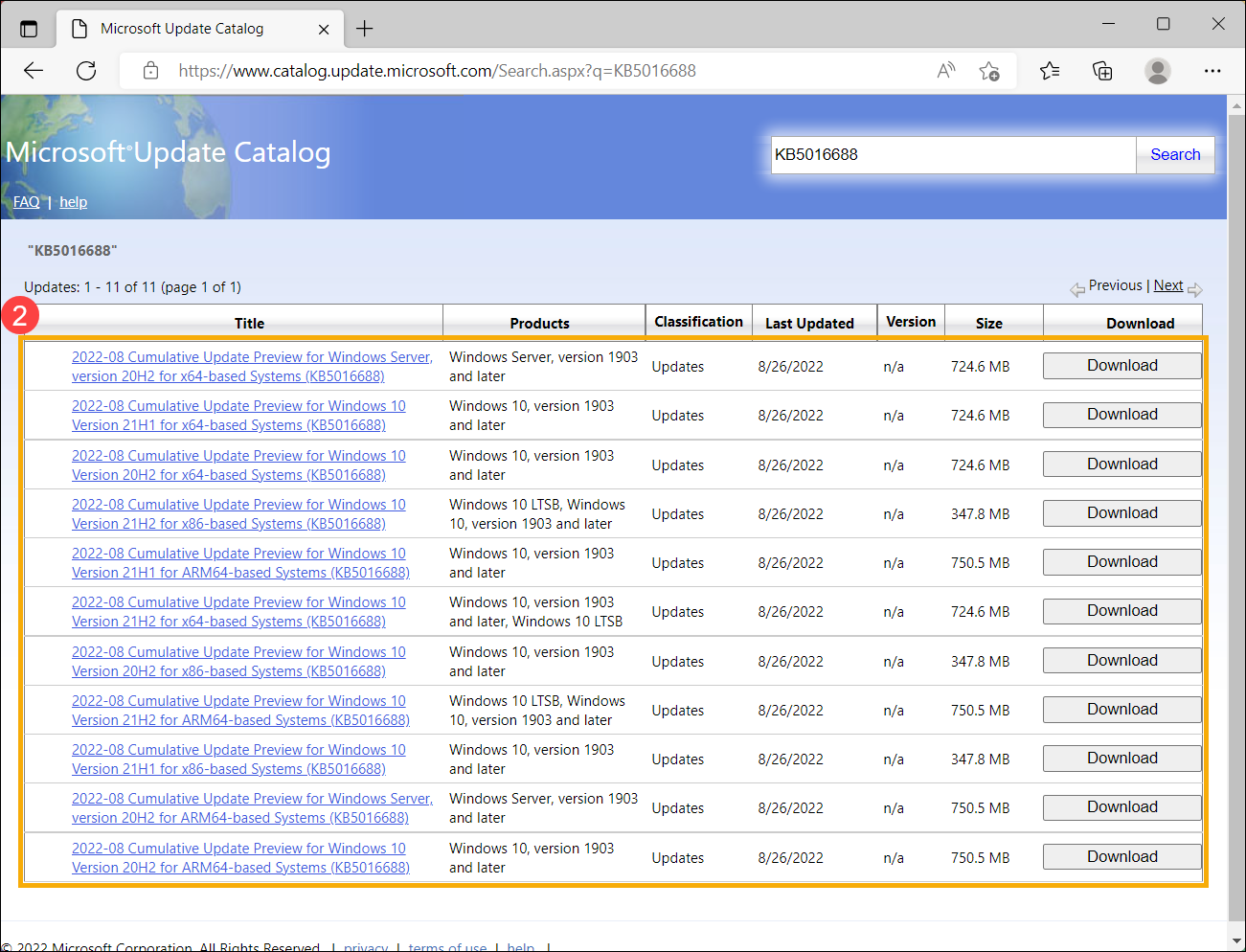
- Click the link to download the standalone package③.
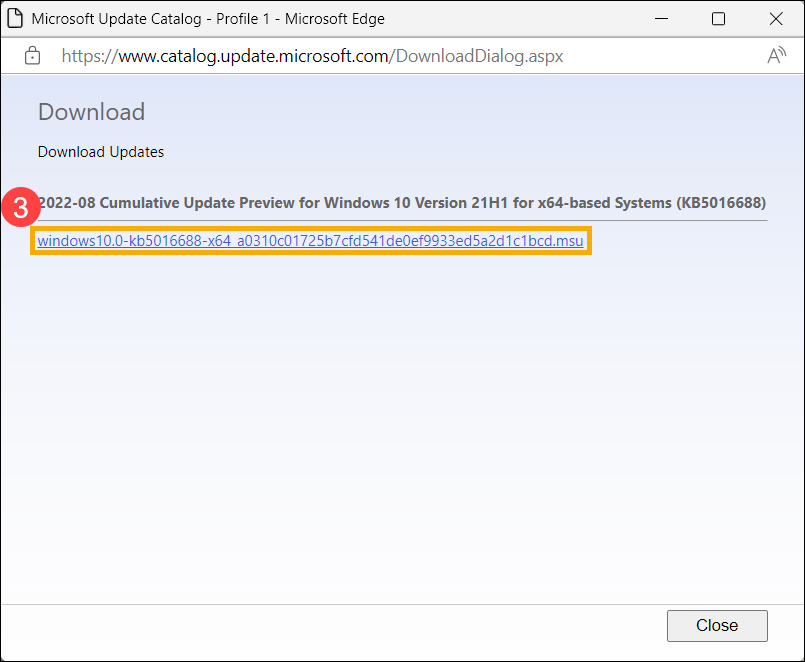
- After the download is complete, double-click the standalone package to start the installation process④. If the installation is failure, please continue to the next troubleshooting.
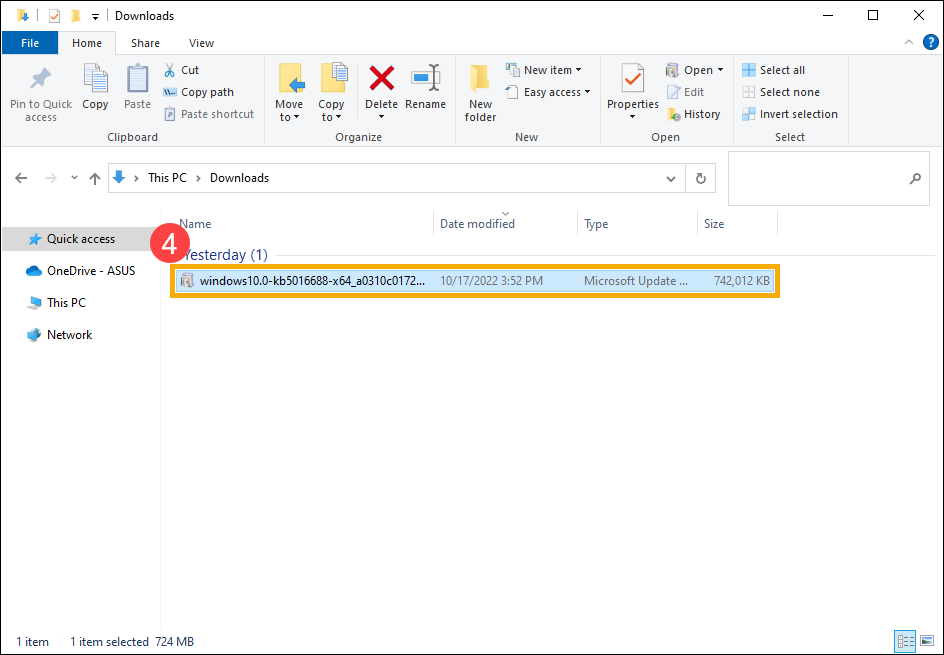
Use the System File Checker tool to repair missing or corrupted system files
- Type and search [Command Prompt] in the Windows search bar①, then click [Run as administrator]②.
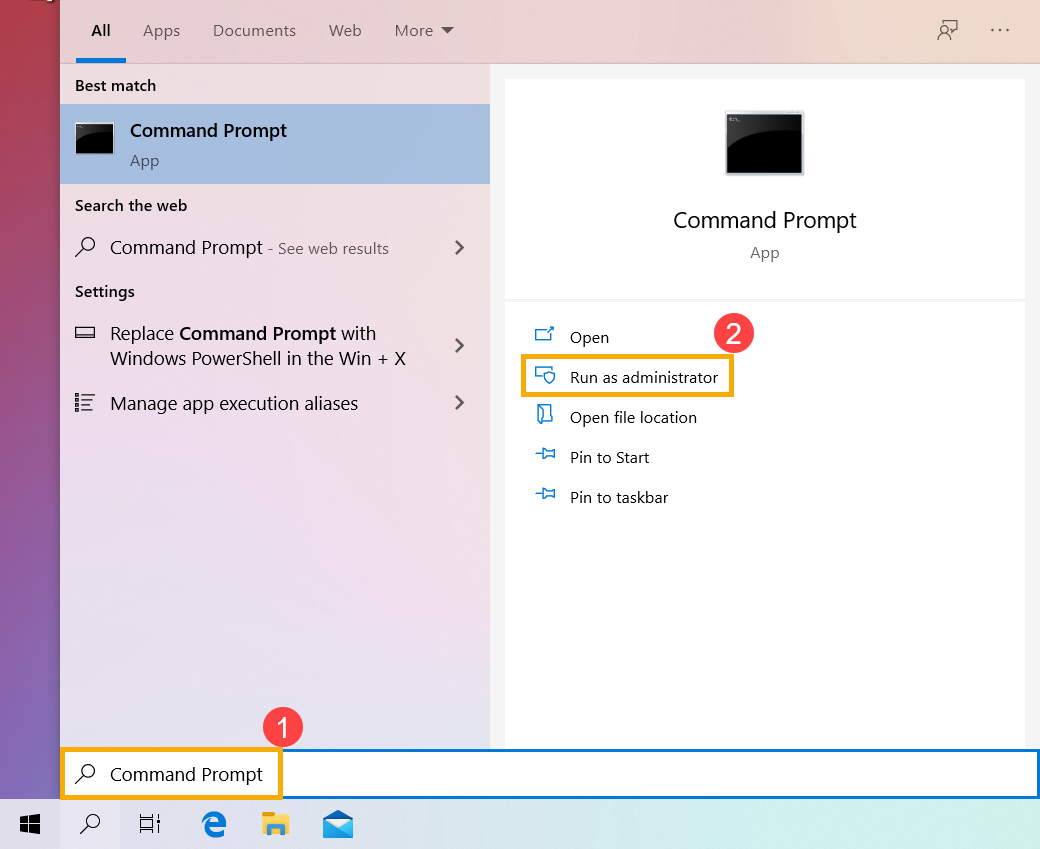
- In Command Prompt, type [DISM.exe /Online /Cleanup-image /Restorehealth] and press the Enter on the keyboard③.

- When the command operation has run successfully and a confirmation message “The restore operation completed successfully” is present, please type [sfc /scannow] and press the Enter on the keyboard④.

- Wait until the sfc scan verification reaches 100% completion, then close Command Prompt and try running the Windows Update again. If the problem persists, please continue to the next troubleshooting.

Restore the system from restore point
If the Windows Update problem happens recently, and if you have ever created a restore point or there is an automatic system restore existed, try to restore the device to a point before the problem began to resolve the problem. Here you can learn more about How to use restore point to restore the system.
If the problem persists, please continue to the next troubleshooting.
If the problem persists after all troubleshooting steps are completed. Please backup your personal files, then reset the device to back to its original configuration. Here you can learn more about: How to reset the system.
If your problem is not worked out with above solution and information, please contact ASUS customer service center for further information.